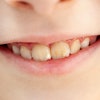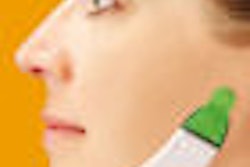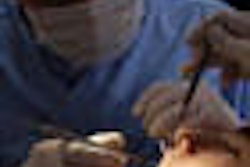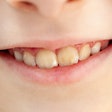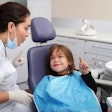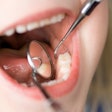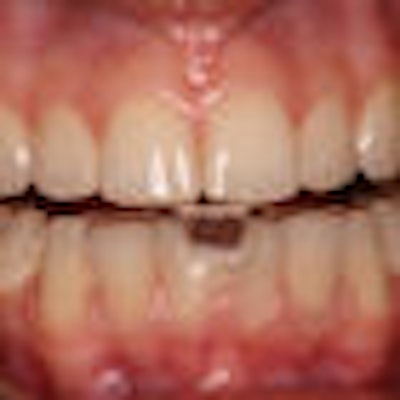
When an opportunity seems too good to be true, it probably is. But lots of dentists are forgetting that principle when it comes to the Nociceptive Trigeminal Inhibition (NTI) tension suppression system, according to James Boyd, D.D.S., whose company, NTI-TSS, sells the device.
“It's not a piece of plastic you can dispense out of the box.”
Too many think the NTI offers a quick, cheap, and easy compromise for patients who grind their teeth and don't want a full-arch splint. But the NTI isn't intended for that purpose, Dr. Boyd pointed out. Meanwhile, many other dentists are failing to fit the device to their patients, he said, then concluding it doesn't work. And even some orofacial experts -- including two who have criticized the device in recent public forums -- don't understand it.
"I probably have the world's record for creating a device that gets an undesired result," he said. "But I also can almost always turn it around and get the desired result."
Like the full-arch occlusal splint typically prescribed for temporomandibular disorder (TMD), NTI works by imposing a hard plastic barrier between mandibular and maxillary teeth. The difference is that the standard NTI covers only the incisors.
Dr. Boyd, director of temporomandibular disorders at the Headache Center of Southern California, argues that the full-arch splint doesn't adequately prevent pain because patients can still clench their posterior teeth on the splint. "The traditional occlusal splint will not diminish the intensity of clenching," he said. The NTI (or any other well-designed anterior bite stop) works better because patients can't bite down as hard on their anterior teeth, and because the vectors of force put less strain on the joint, he argued.
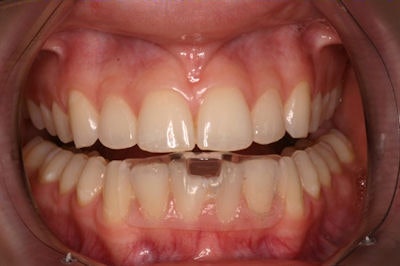 |
|
The standard NTI covers only the incisors. Image courtesy of NTI-TSS. |
Not for everyone
Dr. Boyd acknowledged that the NTI doesn't work for everyone. "There's no need to make an NTI device for somebody who grinds but doesn't have pain," he said. The device doesn't prevent lateral jaw movement. He also admitted that it poses a risk of reducing the incisal overlap, so it shouldn't be used in patients who start with less-than-normal overlap.
Still, these shortcomings are quite different from those described by some leading experts in orofacial pain.
University of Southern California professor Terry Tanaka, D.D.S., speaking at the ADA annual meeting, commented that "anything between the teeth is going to work," at least during the day when a reflex against biting an unfamiliar object kicks in. But the NTI falls short for nighttime clenching, he argued -- in direct contradiction to Dr. Boyd -- because it puts too much pressure on the joint.
"If a guy wears this thing during the night and he bites down, he has no posterior support," Dr. Tanaka said. "All the force is on the joint. What we are seeing now is patients coming to the pain clinics with joint pain wearing these NTIs."
Joseph Cohen, D.D.S., a University of California, Los Angeles (UCLA) assistant professor and president of the American Board of Orofacial Pain, had similar comments. In an interview with DrBicuspid.com, he said the NTI helps with muscle pain but was "inappropriate for joint issues."
He added that users run a risk of their posterior teeth supraerupting with long-term use. He also recommended that patients using the NTI should run a thread through the device and create a necklace to prevent swallowing it.
A common mistake
Dr. Boyd insists that the NTI can diminish migraines and facial pain, as well as TMD caused by nighttime clenching. When patients' pain persists or worsens, it's usually because the dentist made a mistake in fitting the device, he said. Too often dentists don't even realize they need to adjust the device at all. "It's not a piece of plastic you can dispense out of the box," Dr. Boyd said.
The NTI comes in various shapes (a $545 "standard kit" includes 28 devices in five shapes). Since nearly all NTIs need to be modified to fit the patient, and it's easier to grind one down with a bur than to build it up with acrylic, Dr. Boyd designed the average device to be slightly too high for the average patient. (Detailed instructions are available on his Web site.)
Dentists who don't reduce the vertical dimension when necessary risk giving the patient an NTI that's too high, causing excessive condylar rotation. That's why some pain experts are seeing patients with NTIs and joint pain, Dr. Boyd speculated.
Posterior teeth don't supraerupt because patients typically remove the device during the day -- or at the very least to chew their food -- which is sufficient pressure to keep those teeth in place, he said.
As for the risk of swallowing or aspiration, Dr. Boyd said it's exaggerated; if the device is fitted properly, patients can't remove it without using their hands.
So who's right -- Dr. Boyd or the critics?
It's not the last word on the subject, but a systematic review of the literature published in July in Biomed Central Oral Health concluded that "the currently best available evidence suggests that for the management of TMDs the NTI-tss device is similarly efficacious as" a full-arch occlusal splint (July 29, 2008, Vol. 8:22).
The authors, from Graz University and the University of Basel, thought the NTI might have an advantage if a patient had acute pain and needed help right away (presumably because an NTI can be adjusted more quickly than a full splint can be manufactured).
But they also found many reports of side effects, so they recommended that patients return regularly in case readjustments are needed.
The bottom line? As with the rest of life, there's no free munch.



